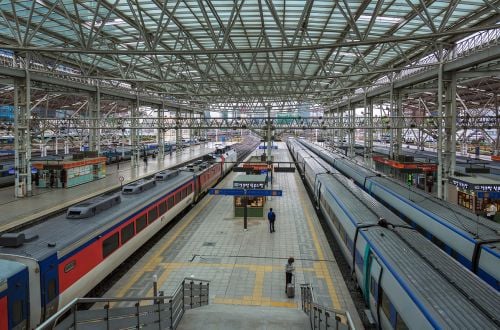Line GTX A services will operate at up to 180 km/h, linking Ilsan in northwest Gyeonggi-do with Seoul and Dongtan in the southeast of Gyeonggi-do.
GTX high-speed services will support long-distance travel within the densely-populated Seoul capital region. While Seoul is already well connected in terms of public transport, commuting to and from surrounding cities can be time-consuming due to the number of stops services make.
Implementation of the GTX project has been under discussion for some time, but progress has been slower than expected.
The network will comprise three lines: GTX A (Ilsan - Dongtan), GTX B (Songdo - Cheongnyangni), and GTX C (Uijeongbu - Geumjeong).
Molit plans to open GTX A in 2023 and the 37.4km section from Ilsan to Samseong will be built privately. With feasibility studies complete, a request for proposals will be issued later this year. A shortlist of candidates will be selected early next year with the aim of starting construction towards the end of 2018.
The southern section from Samseong to Dongtan will open in 2021, and is being built by the Korea Rail Network Authority. Much of this route is already in place, as GTX services will share tracks with the SRT high-speed line.
GTX A will serve nine stations including Ilsan (Kintex), Daegok, Yeonsinnae, Seoul, Samseong, Suseo, Seongnam, Yongin and Dongta.
Once completed, the total length of the line will be 76.9km. Services will operate at an average speed of 116 km/h, three-to-four times faster than a standard metro journey, and will reduce travel time within the Seoul Capital Area significantly. For example, the trip from Kintex to Seoul Station, which currently takes 52 minutes by metro, will be reduced to just 13 minutes with GTX.
GTX A is expected to cost Won 3.58 trillion and the line is expected to attract average daily ridership of around 300,000 passengers, eliminating 50,000 car trips from the region’s roads by 2025.
An extension north from Ilsan to Paju is also being considered.

